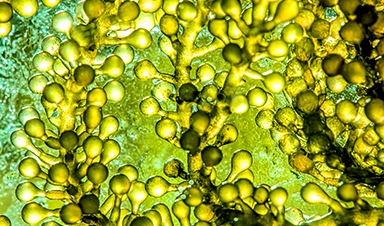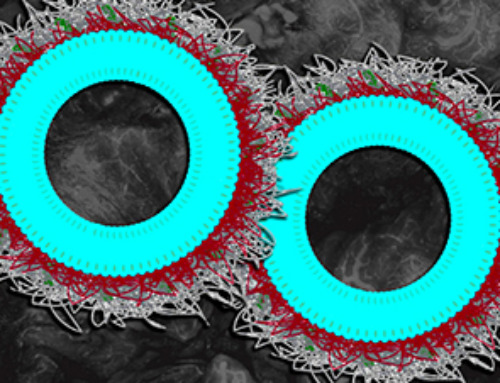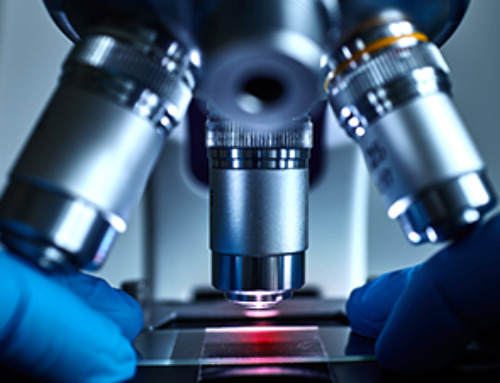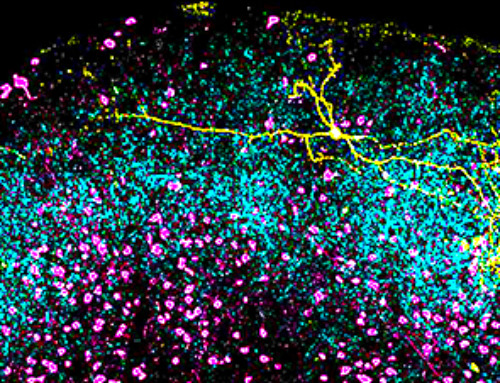A new approach for cancer treatment involves the use of microalgal-derived nanoparticles. A recent review in Frontiers in Bioengineering and Biotechnology examines their potential as a sustainable and biocompatible solution.
Promise and Limitations
Nanoparticles (NPs), defined as particles of between one and 100 nanometers, possess unique physical, chemical, and biological properties that are not observed in bulk materials. Their enhanced surface area, quantum effects, and increased reactivity make them particularly valuable in drug delivery, imaging, and cancer therapeutics.
However, traditional synthesis methods often involve hazardous chemicals or energy-intensive processes, raising toxicity and environmental concerns that hinder their wider clinical adoption. To address this, researchers are increasingly turning to green synthesis, using biological systems to produce nanoparticles under milder, more environmentally friendly conditions.
Microalgae are a particularly attractive source. Rich in enzymes, bioactive compounds, and metabolites, microalgae can reduce metal ions into nanoparticles without toxic reagents or high temperatures. The resulting biogenic nanoparticles offer high biocompatibility and can be tailored to induce cytotoxicity in cancer cells while sparing healthy tissues.
Harnessing Microalgae for Nanoparticle Synthesis
The review assessed numerous studies that showcase how various microalgal species, including Chlorella, Spirulina, and Scenedesmus, have been used to synthesize metallic nanoparticles such as silver (AgNPs).
Typically, microalgal biomass is suspended in aqueous solutions of metal salts, commonly silver nitrate, and bioreduction is initiated through metabolic extracts or secreted compounds. A visible color change, often from clear to yellow or brown, signals successful nanoparticle formation.
To characterize these particles, researchers use techniques like transmission electron microscopy (TEM) to assess morphology, UV-visible spectroscopy for optical properties, energy-dispersive X-ray spectroscopy (EDX) for elemental analysis, and Fourier-transform infrared spectroscopy (FTIR) to evaluate surface chemistry and functional groups.
Microalgae like Dunaliella salina have also been employed to produce gold nanoparticles (AuNPs) with similarly impressive biomedical potential.
Such nanoparticles can form either intracellularly, via metal ion uptake and reduction inside the cells, or extracellularly, where secreted metabolites mediate reduction on cell surfaces or in the surrounding medium. This multi-pathway mechanism includes key stages: activation (reduction and nucleation), growth (particle aggregation), and termination (stabilization or biomineralization).
Tailoring Nanoparticle Properties for Cancer Therapy
The review focuses on how synthesis parameters, like temperature, reactant concentration, and the specific microalgal strain, can affect the size, shape, and surface charge of the synthesized nanoparticles.
Studies have shown that these characteristics directly influence biological activity and therapeutic efficacy. Those cited in the review demonstrate that microalgal nanoparticles can be fine-tuned for targeted cytotoxic effects against various cancer cell lines while exhibiting low toxicity in healthy cells.
The mechanism behind this is believed to involve several pathways, including the generation of reactive oxygen species (ROS), disruption of cancer cell membrane integrity, and the induction of apoptosis.
Due to their small size, nanoparticles can also take advantage of the enhanced permeability and retention (EPR) effect, enabling them to accumulate selectively in tumor tissues. Functionalizing the nanoparticle surface with targeting ligands or anticancer drugs further enhances specificity and improves therapeutic outcomes.
Opportunities and Ongoing Challenges
The review highlights several advantages of microalgal-based nanoparticle synthesis. These include sustainability, low production costs, scalability, and the ability to control physicochemical properties through natural capping agents, which help stabilize the nanoparticles and support their compatibility for biomedical applications.
The authors also highlight the opportunities for integrating synthetic biology and genetic engineering to enhance microalgal strains. By fine-tuning metabolic pathways, it may be possible to increase both the yield and quality of nanoparticles.
However, more research is still required to achieve consistent nanoparticle size and morphology, understand long-term biocompatibility, and establish standardized, reproducible production protocols. While in vitro studies have shown promising results, translating these findings into clinically viable therapies will require extensive in vivo testing and regulatory validation.
Journal Reference
Garlapati V.K., et al. (2025). Sustainable production of microalgal nanoparticles through green synthesis towards cancer treatment. Frontiers in Bioengineering and Biotechnology, 13, 1621876. DOI: 10.3389/fbioe.2025.1621876, https://www.frontiersin.org/journals/bioengineering-and-biotechnology/articles/10.3389/fbioe.2025.1621876/full
News
How a Palm-Sized Laser Could Change Medicine and Manufacturing
Researchers have developed an innovative and versatile system designed for a new generation of short-pulse lasers. Lasers that produce extremely short bursts of light are known for their remarkable precision, making them indispensable tools [...]
New nanoparticles stimulate the immune system to attack ovarian tumors
Cancer immunotherapy, which uses drugs that stimulate the body’s immune cells to attack tumors, is a promising approach to treating many types of cancer. However, it doesn’t work well for some tumors, including ovarian [...]
New Drug Kills Cancer 20,000x More Effectively With No Detectable Side Effects
By restructuring a common chemotherapy drug, scientists increased its potency by 20,000 times. In a significant step forward for cancer therapy, researchers at Northwestern University have redesigned the molecular structure of a well-known chemotherapy drug, greatly [...]
Lipid nanoparticles discovered that can deliver mRNA directly into heart muscle cells
Cardiovascular disease continues to be the leading cause of death worldwide. But advances in heart-failure therapeutics have stalled, largely due to the difficulty of delivering treatments at the cellular level. Now, a UC Berkeley-led [...]
The basic mechanisms of visual attention emerged over 500 million years ago, study suggests
The brain does not need its sophisticated cortex to interpret the visual world. A new study published in PLOS Biology demonstrates that a much older structure, the superior colliculus, contains the necessary circuitry to perform the [...]
AI Is Overheating. This New Technology Could Be the Fix
Engineers have developed a passive evaporative cooling membrane that dramatically improves heat removal for electronics and data centers Engineers at the University of California San Diego have created an innovative cooling system designed to greatly enhance [...]
New nanomedicine wipes out leukemia in animal study
In a promising advance for cancer treatment, Northwestern University scientists have re-engineered the molecular structure of a common chemotherapy drug, making it dramatically more soluble and effective and less toxic. In the new study, [...]
Mystery Solved: Scientists Find Cause for Unexplained, Deadly Diseases
A study reveals that a protein called RPA is essential for maintaining chromosome stability by stimulating telomerase. New findings from the University of Wisconsin-Madison suggest that problems with a key protein that helps preserve chromosome stability [...]
Nanotech Blocks Infection and Speed Up Chronic Wound Recovery
A new nanotech-based formulation using quercetin and omega-3 fatty acids shows promise in halting bacterial biofilms and boosting skin cell repair. Scientists have developed a nanotechnology-based treatment to fight bacterial biofilms in wound infections. The [...]
Researchers propose five key questions for effective adoption of AI in clinical practice
While Artificial Intelligence (AI) can be a powerful tool that physicians can use to help diagnose their patients and has great potential to improve accuracy, efficiency and patient safety, it has its drawbacks. It [...]
Advancements and clinical translation of intelligent nanodrugs for breast cancer treatment
A comprehensive review in "Biofunct. Mater." meticulously details the most recent advancements and clinical translation of intelligent nanodrugs for breast cancer treatment. This paper presents an exhaustive overview of subtype-specific nanostrategies, the clinical benefits [...]
It’s Not “All in Your Head”: Scientists Develop Revolutionary Blood Test for Chronic Fatigue Syndrome
A 96% accurate blood test for ME/CFS could transform diagnosis and pave the way for future long COVID detection. Researchers from the University of East Anglia and Oxford Biodynamics have created a highly accurate [...]
How Far Can the Body Go? Scientists Find the Ultimate Limit of Human Endurance
Even the most elite endurance athletes can’t outrun biology. A new study finds that humans hit a metabolic ceiling at about 2.5 times their resting energy burn. When ultra-runners take on races that last [...]
World’s Rivers “Overdosing” on Human Antibiotics, Study Finds
Researchers estimate that approximately 8,500 tons of antibiotics enter river systems each year after passing through the human body and wastewater treatment processes. Rivers spanning millions of kilometers across the globe are contaminated with [...]
Yale Scientists Solve a Century-Old Brain Wave Mystery
Yale scientists traced gamma brain waves to thalamus-cortex interactions. The discovery could reveal how brain rhythms shape perception and disease. For more than a century, scientists have observed rhythmic waves of synchronized neuronal activity [...]
Can introducing peanuts early prevent allergies? Real-world data confirms it helps
New evidence from a large U.S. primary care network shows that early peanut introduction, endorsed in 2015 and 2017 guidelines, was followed by a marked decline in clinician-diagnosed peanut and overall food allergies among [...]






















